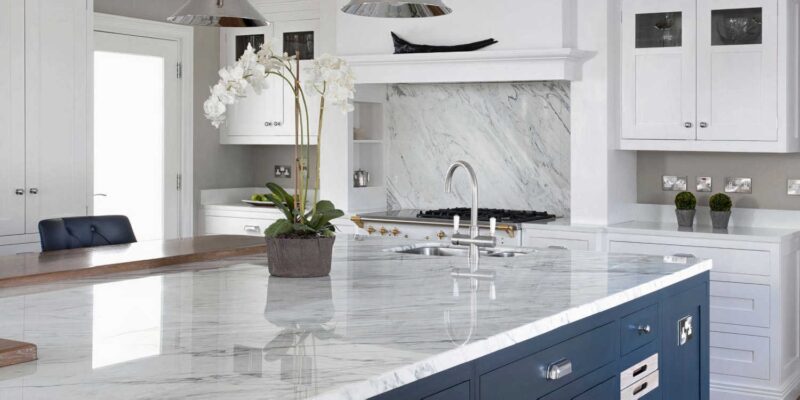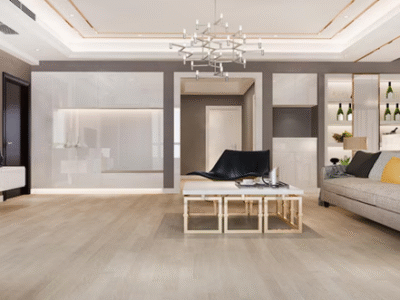Key Takeaways:
- The color of quartz countertops is determined by the presence of impurities and trace elements during its formation.
- Pigments and dyeing techniques are used to enhance or alter the hues of quartz countertops.
- The way light interacts with the surface of quartz countertops affects the perceived color.
- Popular color trends in quartz countertops include bold and vibrant colors, natural and earthy tones, and translucent light-filled countertops.
- When choosing a quartz color, consider the overall design scheme, the impact of natural light, and the opportunity to create a focal point with unexpected color choices.
- Proper care and maintenance, including the use of specific cleaning methods and protection against stains and discoloration, can help preserve the brilliance of quartz countertops.
1. The Science Behind the Dazzling Colors
When it comes to quartz countertops, one of the most striking features is the wide range of colors available. From subtle neutrals to bold and vibrant hues, quartz offers an unparalleled variety of shades to suit any design aesthetic. But have you ever wondered how these dazzling colors are created? Let’s delve into the science behind the mesmerizing colors of quartz countertops.
Understanding the Mineral Composition of Quartz
Quartz is a mineral that belongs to the silicate group and consists of silicon dioxide. It is one of the most abundant minerals on Earth and can be found in various forms, including amethyst, citrine, and rose quartz. The color of quartz is determined by the presence of impurities and trace elements during its formation.
For example, the presence of iron oxide can give quartz a yellow or red color, while the presence of titanium or manganese can result in a purple or violet hue. Quartz manufacturers carefully select specific minerals and elements to create the desired colors in the countertops.
The Role of Pigments and Dyeing Techniques
In addition to the natural colors found in quartz, pigments and dyeing techniques are often used to enhance or alter the hues of the countertops. Pigments are substances that can be added to the quartz mixture to create specific colors. These pigments are mixed with the quartz crystals before the slabs are formed.
Dyeing techniques, on the other hand, involve modifying the color of the quartz surface after it has been manufactured. This can be done through the application of dyes or stains that penetrate the surface of the quartz and alter its color. These techniques allow for a wider range of colors to be achieved, including unique patterns and veining effects.
The Influence of Light and Reflection on Color Perception
Another factor that contributes to the dazzling array of colors in quartz countertops is the way light interacts with the surface. The structure of quartz allows for the reflection and refraction of light, which can affect the perceived color of the countertops.
For example, quartz with a high polish finish will reflect more light, making the color appear more vibrant. On the other hand, a matte or honed finish will absorb more light, resulting in a softer and more subdued color. The type of lighting in the space, whether natural or artificial, can also impact the way the colors of quartz countertops are perceived.
2. Exploring Popular Color Trends in Quartz Countertops
With the different colors of quartz countertops available, there is a countertop to suit every design trend and personal style. Let’s take a closer look at some of the popular color trends in quartz countertops.
The Rise of Bold and Vibrant Color Choices
Gone are the days of plain, neutral countertops. Today, homeowners are embracing bold and vibrant colors in their kitchen and bathroom designs. From deep blues and greens to fiery oranges and yellows, bold colors can add a sense of personality and excitement to any space.
These vibrant color choices can be used as statement pieces in an otherwise neutral kitchen or bathroom, or they can be incorporated into a larger color scheme to create a cohesive and eye-catching design. The options are endless when it comes to quartz countertops in bold colors.
Natural and Earthy Tones for a Timeless Aesthetic
While bold colors are on the rise, natural and earthy tones remain a popular choice for those seeking a timeless and classic aesthetic. Shades of beige, brown, and gray are versatile and can blend seamlessly with a variety of design styles.
These neutral tones mimic the natural beauty of granite and marble, making quartz countertops an affordable and low-maintenance alternative. Paired with wood cabinetry and warm accents, natural and earthy tones can create a warm and inviting atmosphere in any kitchen or bathroom.
Translucency and the Allure of Light-Filled Countertops
One of the unique features of quartz countertops is their translucency. Some quartz varieties have the ability to transmit light, creating a stunning and captivating effect. These light-filled countertops can add a touch of elegance and luxury to any space.
Translucent quartz countertops can be particularly striking when paired with under-cabinet lighting or natural light sources. They create a sense of depth and dimension, casting a soft and diffused glow that enhances the overall ambiance of the room.
3. Choosing the Perfect Quartz Color for Your Space
With so many colors to choose from, selecting the perfect quartz color for your space can seem like a daunting task. However, by considering a few key factors, you can narrow down your options and find the ideal color that complements your design scheme.
Considerations for Creating a Cohesive Design Scheme
When choosing a quartz color, it’s important to consider the overall design scheme of your space. Take into account the colors of your cabinets, flooring, and other prominent elements in the room. A good rule of thumb is to choose a quartz color that complements or contrasts with these existing colors, creating a cohesive and harmonious look.
If you’re aiming for a modern and sleek design, a quartz color in a contrasting shade can create a visual impact. Conversely, if you prefer a more traditional or rustic look, opting for a quartz color that blends seamlessly with the surrounding elements can create a timeless aesthetic.
Enhancing Natural Light with Light-Mimicking Colors
Natural light can significantly impact the way colors are perceived in a space. If your kitchen or bathroom receives ample natural light, consider choosing a quartz color that mimics the look of natural materials, such as marble or granite. Lighter hues with subtle veining can create a bright and airy feel, enhancing the natural light and making the space appear larger.
On the other hand, if your space lacks natural light, you can choose a quartz color in a warmer tone to add warmth and coziness to the room. Rich browns or earthy reds can create a welcoming atmosphere, even in dimly lit areas.
Creating a Focal Point with Unexpected Color Choices
If you’re looking to make a bold statement in your kitchen or bathroom, consider choosing a quartz color that deviates from the traditional choices. Explore unique colors such as teal, purple, or even black to create a focal point in the room.
These unexpected color choices can add drama and personality to the space, becoming a conversation starter and a reflection of your personal style. Pair these vibrant hues with complementary accents and accessories to create a cohesive and visually appealing design.
4. Maintaining and Preserving the Brilliance of Quartz Countertops
Once you’ve selected the perfect color for your quartz countertops, it’s important to take steps to maintain and preserve their brilliance. With proper care and maintenance, your countertops can retain their luster and beauty for years to come.
The Best Cleaning Methods for Different Quartz Colors
Quartz countertops are known for their durability and low maintenance, but different colors may require specific cleaning methods to ensure their longevity. It’s important to follow the manufacturer’s guidelines for cleaning and avoid using harsh chemicals or abrasive cleaners that can damage the surface.
For lighter-colored countertops, a mild soap and water solution usually suffice for daily cleaning. For darker colors or countertops with stubborn stains, a non-abrasive cleaner specifically formulated for quartz is recommended. Regularly wiping the surface with a soft cloth or sponge can help prevent the buildup of dirt and grime.
Protecting Against Stains and Discoloration
While quartz countertops are resistant to stains, it’s still important to address spills promptly to prevent any potential discoloration. Acidic substances like citrus juices, vinegar, or wine can etch the surface if left for an extended period.
Always use a cutting board when working with sharp objects to avoid scratching the surface. It’s advisable to use trivets or hot pads when placing hot containers directly on the countertop to prevent thermal shock and potential damage.
Tips for Ensuring Longevity and Long-Lasting Color Brilliance
To ensure the longevity of your quartz countertops and maintain their color brilliance, there are a few additional tips to keep in mind. Regularly sealing the countertops with a quartz sealant can provide an extra layer of protection against stains and discoloration.
Avoid exposing your countertops to direct sunlight for extended periods, as continuous exposure can lead to fading or discoloration. Finally, use caution when applying hair and beauty products near the countertops, as some chemicals can cause discoloration or damage to the surface.
By following these maintenance tips and preserving the brilliance of your quartz countertops, you can enjoy their stunning colors and durability for many years to come.
FAQ
Question: How are the colors of quartz countertops created?
Answer: The color of quartz countertops is determined by the presence of impurities and trace elements during its formation. Pigments and dyeing techniques can also be used to enhance or alter the hues of quartz countertops. The way light interacts with the surface of quartz countertops also affects the perceived color.
Question: What are some popular color trends in quartz countertops?
Answer: Popular color trends in quartz countertops include bold and vibrant colors, natural and earthy tones, and translucent light-filled countertops. These color choices can add a sense of personality and excitement or create a timeless and classic aesthetic in any space.
Question: How can I choose the perfect quartz color for my space?
Answer: When choosing a quartz color, consider the overall design scheme of your space and how it complements or contrasts with existing colors. Also, take into account the impact of natural light and how different colors can enhance or warm up the space. For those looking to make a bold statement, consider choosing unexpected colors to create a focal point in the room.
Question: What are some tips for maintaining and preserving the brilliance of quartz countertops?
Answer: To maintain the brilliance of quartz countertops, it is important to follow the manufacturer’s guidelines for cleaning and use non-abrasive cleaners specifically formulated for quartz. Promptly address spills to prevent potential staining or discoloration. Regularly sealing the countertops, avoiding direct sunlight exposure, and being cautious with chemicals can also help preserve the color brilliance and durability of quartz countertops.








Comments